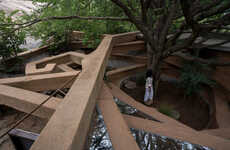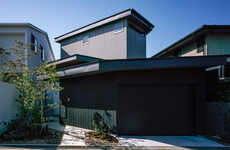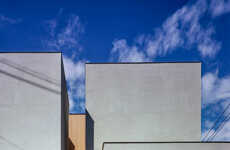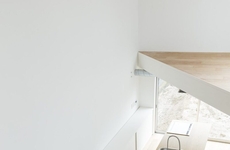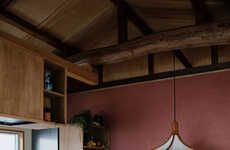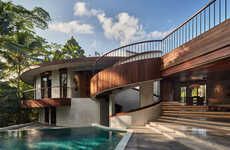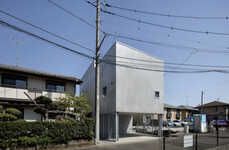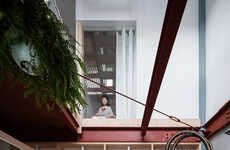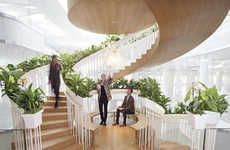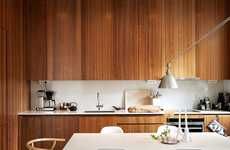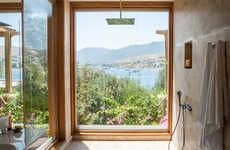
'House Twisted' Snakes Through a Crowded Residential Neighborhood in Japan
Rahul Kalvapalle — April 10, 2014 — Art & Design
References: designboom
'House Twisted' is, as the name suggests, a twisted house design. It hasn't been contorted as gimmick, but was actually given its strange twisted design to conform to the demands of the plot of land it is located on. The awkwardly-shaped plot of land sits in a densely populated neighborhood in Osaka, Japan. The design was the brainchild of Kyoto-based architecture practice Alphaville.
What makes Twisted House stand out even more is the fact that it is surrounded by very traditional looking housing. Despite its unconventional design, the house is designed to be maximally functional and comfortable for its residents. Its roof planes contain skylights, bringing plenty of natural light into the heart of the house. Three carefully placed sets of doors -- in the porch, kitchen and courtyard -- provide easy access to the outer areas of the property and its surroundings.
Photo Credits: designboom
What makes Twisted House stand out even more is the fact that it is surrounded by very traditional looking housing. Despite its unconventional design, the house is designed to be maximally functional and comfortable for its residents. Its roof planes contain skylights, bringing plenty of natural light into the heart of the house. Three carefully placed sets of doors -- in the porch, kitchen and courtyard -- provide easy access to the outer areas of the property and its surroundings.
Photo Credits: designboom
Trend Themes
1. Twisted Architecture - Opportunity for designers to create unconventional buildings that maximize functionality and comfort in densely populated urban areas.
2. Optimizing Awkwardly-shaped Land - Opportunity for architects to create unique building designs that meet the challenges of handling oddly-shaped pieces of land.
3. Blending Modern and Traditional Designs - Opportunity for architects to create boundary-pushing designs that seamlessly integrate with the surrounding traditional architecture.
Industry Implications
1. Architecture - Architects can use innovative designs, materials, and technologies to create functional buildings that meet the challenging demands of our increasingly crowded urban areas.
2. Real Estate - Real estate developers can create unique properties that stand out in the crowded market by taking advantage of unconventional plots of land.
3. Interior Design - Interior designers can create functional spaces that maximize natural light and access to outdoor areas, making the most of unique and unconventional building designs.
5.2
Score
Popularity
Activity
Freshness


